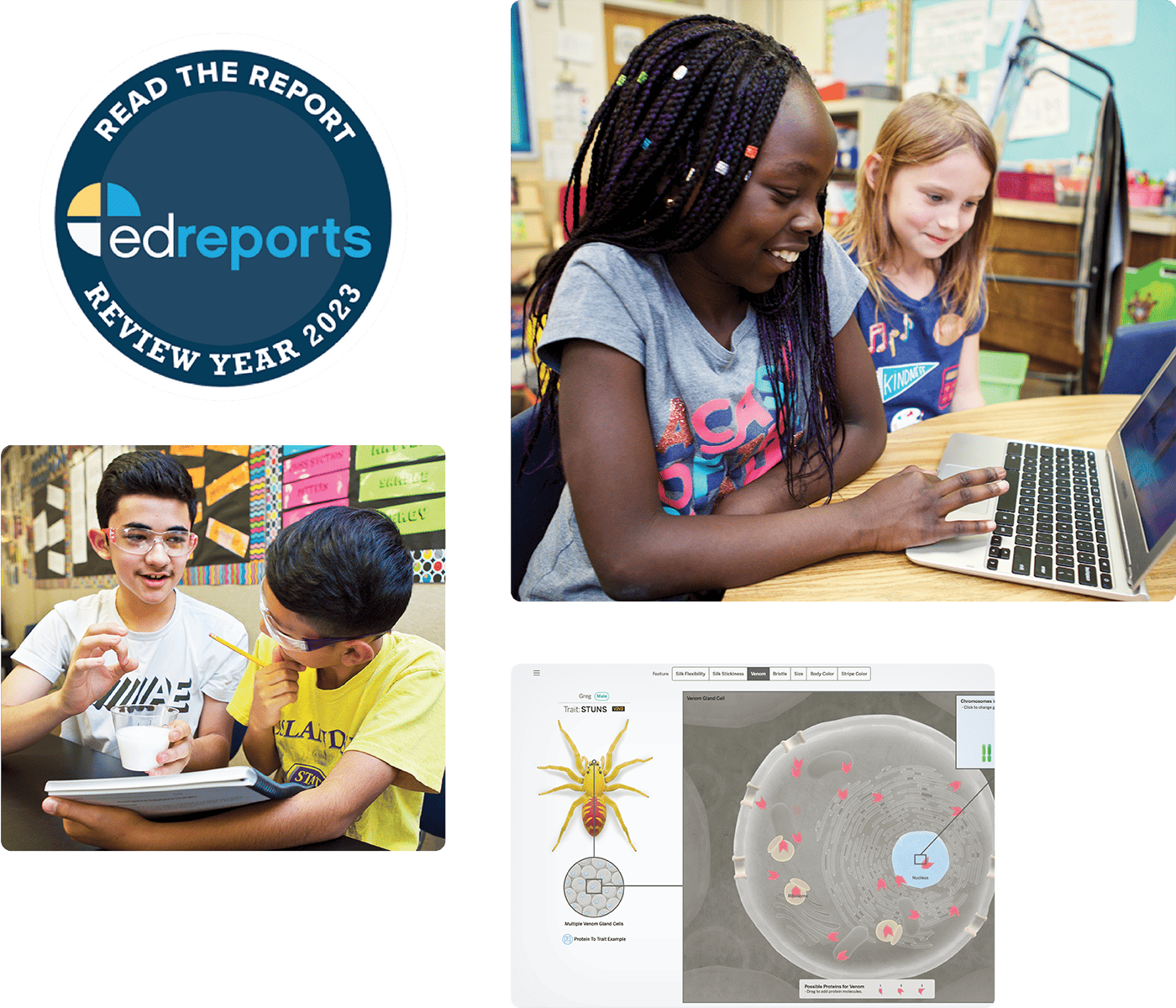Welcome to Amplify Science!
Amplify Science is a highly engaging, phenomena-based program for grades K–8 that integrates the latest practices in science teaching and learning, as well as interactive digital tools and hands-on activities, to teach students how to think, read, write, and argue like real scientists and engineers.
About the program

Each unit of Amplify Science engages students in a relevant, real-world problem where they investigate scientific phenomena, engage in collaboration and discussion, and develop models or explanations in order to arrive at solutions.
The program includes hands-on activities, print materials, and powerful digital tools to support online and offline teaching and learning. Highly adaptable and user-friendly, the program gives schools and individual teachers flexibility based on their technology resources and preferences.


In every unit, students take on the role of scientists or engineers—marine biologists, geologists, water resource engineers, and more—to solve a real-world problem. These engaging roles and problems provide relevant contexts through which students investigate phenomena.
A powerful partnership
Amplify Science was developed by the science education experts at UC Berkeley’s Lawrence Hall of Science and the digital learning team at Amplify. As the Hall’s first curriculum designed to address the new science standards, Amplify Science reflects state-of-the-art practices in science teaching and learning.
Amplify Science is rooted in the Lawrence Hall of Science’s Do, Talk, Read, Write, Visualize model of learning. This research-based approach presents students with multiple modalities through which to explore the curriculum.
K–5 sample

In Balancing Forces, students are challenged to figure out how a floating train works in order to explain it to the citizens of the fictional city Faraday.
- Learn more about phenomena and the student roles of scientists and engineers across all units in grades K–5.
- Learn more about the Student Books written exclusively for Amplify Science for grades K–5.
- Learn more about the program structure of Amplify Science for grades K–5.
Hear from teachers about why they love Amplify Science:
6–8 sample

Metabolism (Grade 6/Life Science)
Inhabiting the role of medical students in a hospital, students are able to draw the connections between the large-scale, macro-level experiences of the body and the micro-level processes that make the body function as they first diagnose a patient and then analyze the metabolism of world-class athletes.
- Learn more about phenomena and the student roles of scientists and engineers across all units in grades 6–8.
- Learn more about the digital simulations in grades 4–8 of Amplify Science.
- Learn more about the program structure of Amplify Science for grades 6–8.

